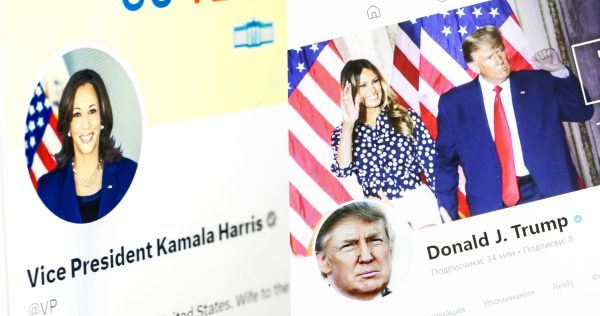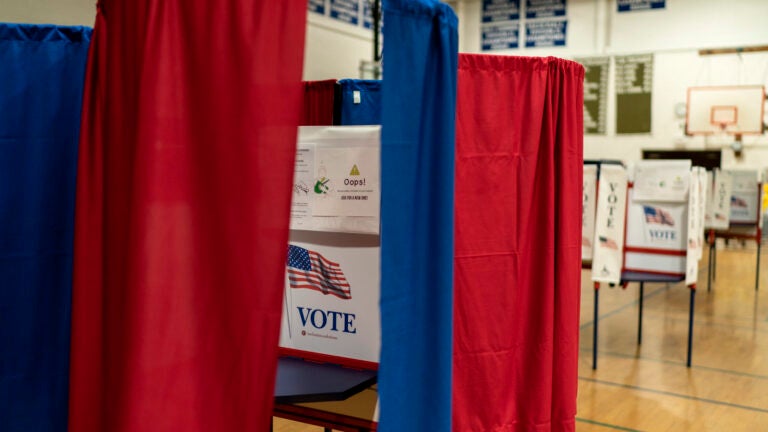“Every four years, big brother is also getting bigger,” a Southeast Asian official succinctly commented on the intersection of U.S. elections and China’s growing influence on the sidelines of a conference in Jakarta in the runup to upcoming polls pitting Donald Trump against Kamala Harris. To be sure, Southeast Asian states are all too familiar with the vicissitudes of four-year U.S. presidential cycles, and U.S. policymakers have themselves had to manage regional perceptions of perceived commitment shifts for decades, amid the reality of Washington’s longstanding presence. But such characterizations nonetheless epitomize the hard realities that lie ahead for U.S. Southeast Asia policy, irrespective of the election results next month.
Southeast Asian states are no strangers to ebbs, flows, and imbalances in U.S. commitment, despite the oft-cited bipartisan consensus on U.S. Asia policy. While administrations have pursued the same general post-World War II objective of creating a more stable world while preventing the rise of a rival hegemon in Asia, the way each has thought about power, ranked threats, and translated capabilities into commitment has varied amid evolving developments including the end of the Vietnam War, the September 11 attacks or China’s rise as the U.S. “pacing challenge.”
These shifts are often felt more by regions like Southeast Asia, which still do not receive the attention they deserve inside and outside of government, relative to China, Japan, or India. They also manifest themselves more in domains like multilateralism or trade, which are more sensitive to changes of administration and are not always as well-resourced relative to the security domain. Those realms are even more central in Southeast Asia’s case given its status as the world’s fifth-largest economy and ASEAN’s position as the main convening hub for Indo-Pacific diplomacy.
Today, the direction of U.S. policy is being scrutinized amid a more fractured domestic political landscape and diversified and dynamic region. The centrality of Asia, which already accounts for as much as two-thirds of global growth, has been recognized by consecutive U.S. administrations, and there is still appreciation in the region for U.S. strengths, including its firms and universities. But domestically, indications of waning popular enthusiasm for international engagement and rising party polarization have raised questions about how able and willing Washington will be to continue to shoulder international burdens envisioned in past primacist visions of U.S. policy.
Regionally, more actors like Australia, India and Japan are shaping the institutional landscape amid China’s lingering trust deficit, even if there is still a gulf between these powers and Washington and Beijing that defy simplistic characterizations of bipolar or multipolar realities. Global developments, including the COVID-19 pandemic, intensified major power competition, and wars in Europe and the Middle East have also exacerbated longstanding divisions regarding power, identities, and diversity that extend far beyond the Global South label. Southeast Asia’s more senior statesmen, including Indonesia’s Prabowo Subianto and Malaysia’s Anwar Ibrahim, have been assertive in speaking out about the regional stakes at play beyond the narrow prism of U.S.-China competition.
The administrations of Donald Trump and Joe Biden have presented varying approaches to these evolving realities, with elements of continuity and change in U.S. Southeast Asia policy. The Trump team leaned more into domestic America First tendencies and broke an already fragile China consensus. This shored up the U.S. security commitment in areas like the South China Sea, elevated mechanisms like the Quad, birthed new economic institutions like the Development Finance Corporation, and provided transactional openings for strategic partners like Thailand and Malaysia. But it also saw a decline in U.S. multilateral engagement in ASEAN and complicated bilateral ties amid scrutiny on issues such as immigration policy, North Korea, and trade deficits after the U.S. withdrawal from the Trans-Pacific Partnership.
The Biden administration’s broader Indo-Pacific strategy has refocused attention on transnational challenges like climate change, restored focus on an elevated ASEAN partnership, and intensified the expansion of a latticework of diplomatic relationships, including diplomatic upgrades with Indonesia and Vietnam, a tech partnership with Singapore, and the U.S.-Japan-Philippine trilateral. But it also ran into limits on areas like ideals and trade. The initial controversy over Democracy Summit invites and the demise of the trade pillar of the Indo-Pacific Economic Framework (IPEF) are cases in point.
As such, there will be lingering questions around U.S. Southeast Asia policy irrespective of whether Harris or Trump emerge victorious next month. The oft-cited challenges to U.S. regional engagement, such as an unclear narrative, ballooning budget deficit, or divided economic policy, are more structural than partisan. Washington also has a long way to go in defining an asymmetric, bounded competition with Beijing beyond generalities like a “small yard, high fence” approach or “invest, align, and compete.”
This is particularly the case in non-military domains and in subregional spaces like the Mekong, where China is surging ahead. For instance, by one count, while the United States accounts for more than three times the number of military drills China carries out in Southeast Asia, China is leading nearly two to one on trade, approaching $1 trillion dollars annually, and is climbing the investment rankings in key states. While quantity ought not to be confused with quality, at some point quantity can create its own quality, feeding into fears about Beijing’s inevitable dominance that few in the region actually desire. U.S. adversaries will also have a say in how prospects play out. This includes potentially testing the next U.S. president on flashpoints like the South China Sea where China has been making gains since the 2010s, during which time it has come to possess the world’s largest navy.
While both are known figures, it would be a mistake to equate a Harris administration with a second Biden term or to assume that a second Trump term would resemble his first. A Harris administration would see relatively more continuity in terms of the broad outlines of an Indo-Pacific strategy given her role in the Biden administration. That role saw her standing in for Biden at APEC and ASEAN meetings hosted by Thailand and Indonesia in 2022 and 2023, respectively, while her Philippine trip also included delivering remarks on board the Coast Guard ship BRP Teresa Magbanua that has been in the headlines recently amid the ongoing tensions with China.
Yet there are still lingering questions about how Harris would approach specific U.S. policy areas like China, human rights, and trade. This will impact the expectations of regional states, be it for sectoral agreements like critical minerals pacts (Indonesia and the Philippines) or broader partnership recalibrations with nations that prefer more hedged positions in U.S.-China competition (Cambodia and Malaysia). It will also affect the trajectory of U.S. policy, including building out partner incentives in U.S. industrial policy beyond the current state of IPEF, which lacks the market access regional states desire. Some in the Harris orbit also suggest she may be a unique soft power asset in engaging the region on youth, gender, and diversity issues.
More questions surround a second Trump administration, including the nature of its Asia personnel bench relative to the first term, the effects on U.S. government capacity, and how an America First vision will fit with the raging wars in Europe and the Middle East. Policy-wise, beyond punitive measures like nixing IPEF, withdrawing from the Paris Agreement, imposing more China tariffs, or widening supply chain scrutiny on third countries beyond China, the question is the extent to which there will be an affirmative vision that stands to benefit for Southeast Asia’s leaders, most of whom recently took office.
While disruptions during the Trump first term were accompanied by U.S. policy gains in some areas, such as the Mekong and in minilateralism, the key question, as one ex-Trump Asia appointee put it, is whether the “noise to signal ratio” could shift in a second term. More broadly, a narrow U.S. focus on China risks seeing Washington’s immediate demands being met transactionally even as less “like-minded” countries turn to others, including Beijing, in search of longer-term opportunities. We have begun to see this in areas such as high-speed rail and digital payments. The unpredictability of conflicts in Europe or the Middle East could also complicate partnerships, as we saw with scrutiny on Vietnam’s defense purchases from Russia or the rare public protests in Brunei sparked by the Israel-Hamas war.
Beyond the administration-specific questions that emerge every four years, there are also wider issues that will likely take multiple administrations to concretize amid evolving domestic, regional, and global realities. Current U.S. officials privately admit that Washington is only beginning to grapple with some of the evolving policy realities, including its capacity to engage across proliferating minilaterals and to find the interagency balance between cooperation, competition, and confrontation with China. Domestically, as U.S. principals such as Kurt Campbell have rightly noted, the broadening of the U.S. frame from Asia to the Indo-Pacific, as well as new geoeconomic issues relating to technology, necessitate a generational shift in talent that prioritizes not just Southeast Asia, but also regions like the Pacific Islands and Indian Ocean.
Regionally, beyond multipolar aspirations, there are still questions about the shape of engagement by some major powers amid trends such as Japan’s increasing foray into the security realm or India’s limited engagement in the regional economic architecture. Globally, rising protectionist sentiment, growing transnational challenges, and besieged multilateralism are just a couple of the persistent uncertainties for Southeast Asian states. These include smaller ones like Timor-Leste and Laos that are seeking to develop their economies while lacking the domestic capacity or international attention enjoyed by Indonesia or Vietnam.
These realities do not detract from the importance of the outcome of the 2024 U.S. presidential elections. But they are nonetheless an important reminder about the wider stakes of U.S. commitment to one of the world’s most consequential and dynamic regions. In the 2010s, it was fashionable for Obama administration officials leading the so-called “pivot to Asia” to speak of a “pivot within the pivot” to Southeast Asia. Heading into the second half of the 2020s and into the 2030s, the key challenge for U.S. policy will be to ensure that the concrete and sustainable commitments that stem from this pivot will advance U.S. interests in Southeast Asia as well as those of Washington’s partners, as domestic, regional, and global dynamics continue to evolve.




